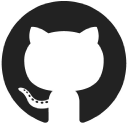The Story Behind A $90K/Month Independent Publishers And Books Reviews Publication
Hello! Who are you and what business did you start?
Hi, I’m Victoria Sutherland, and in 1998 I started a magazine called Foreword Reviews. We provide long-form reviews of books from independent publishers, these were smaller presses that weren’t getting much coverage, which may include an author-publisher to university presses—and everyone in between. I could see that this sector of the industry was about to explode and was creating good content, yet the existing trade publications were mostly ignoring them and only covering the top five houses.

Back then, we were primarily geared towards discovering great books for librarians and booksellers who were unable to find trusted reviews from small presses, and they needed reviews to stock books on their shelves. Now, our audience also includes avid readers who want to find more interesting titles to spend time with and find...

Download the report and join our email newsletter packed with business ideas and money-making opportunities, backed by real-life case studies.

Download the report and join our email newsletter packed with business ideas and money-making opportunities, backed by real-life case studies.

Download the report and join our email newsletter packed with business ideas and money-making opportunities, backed by real-life case studies.

Download the report and join our email newsletter packed with business ideas and money-making opportunities, backed by real-life case studies.

Download the report and join our email newsletter packed with business ideas and money-making opportunities, backed by real-life case studies.

Download the report and join our email newsletter packed with business ideas and money-making opportunities, backed by real-life case studies.

Download the report and join our email newsletter packed with business ideas and money-making opportunities, backed by real-life case studies.

Download the report and join our email newsletter packed with business ideas and money-making opportunities, backed by real-life case studies.
























